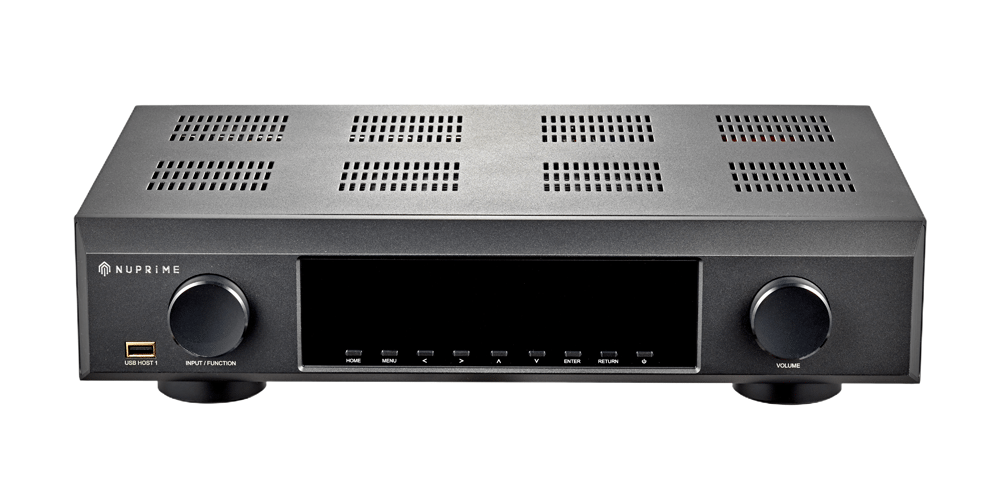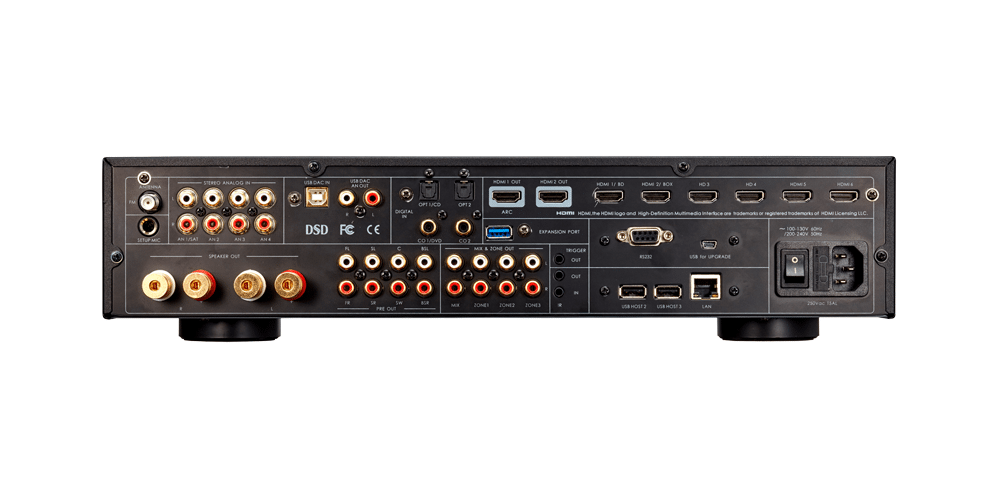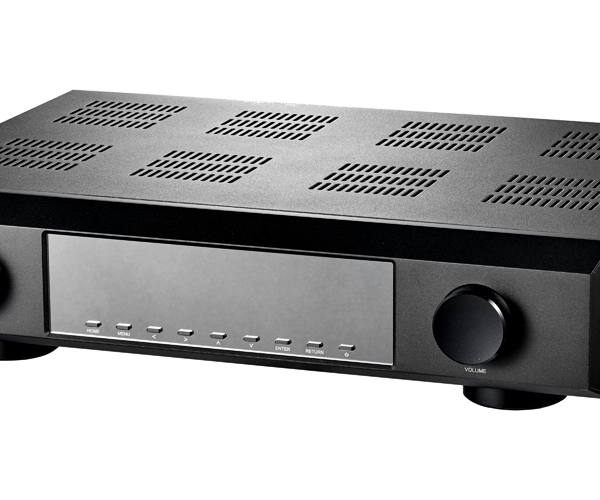Audio Features:
– Supporting the latest HD audio decoding, including Dolby TrueHD, Dolby Digital Plus, DTS Master, DTS Hi-Res.
– SD audio decoding compatible with Dolby Digital (EX), DTS, DTS ES (D6.1, M6.1), DTS 96/24, up to 192k PCM for 7.1 CH etc.
– Supporting matrix technology such as Dolby Pro Logic IIz, DTS Neo:6 etc.
– Intelligent room acoustic scanning feature
– Powerful bass management feature for individually managing front, center, surround, and rear speakers over a cross-over filter. Increasing the performance of single / double post positioning devices.
– Comes with an equalizer of eleven different options and settings.
– Comprehensive cross-over design.
Video Features:
– Supporting HDMI 1.4
– 6 HDMI inputs, 2 HDMI outputs: HDMI 1/ HDMI 2/ HDMI 3/ HDMI 4 support up to 4K, HDMI 5 / HDMI 6 supports up to 1080P.
– HDMI supports up to 4K, YUV, RGB, supporting DVI mode, supporting HD audio, 8 CH LPCM.
– Supporting 3D video playback
– Supporting HDMI CEC control management
– Supporting HDMI ARC audio return
– Video input compatibility: HDMI/DVI, 480P, 576P, 720P50, 720P60, 1080i 50, 1080i 60, 1080P 50, 1080P 60, 1080P 24, 2160P 30, 2160P 24.
– Including hard-disk player, 3 USB ports (1 in front panel 2 in back panel), capable of playing audio/video directly from USB drive or hard-disk drive.
The HDMI 1.4 specification supports multiple 4K formats: 3840 pixels wide by 2160 pixels high @ 24Hz | 25Hz | 30Hz 4096 pixels wide by 2160 pixels high @ 24Hz
If we choose to use HDMI 2.0 with HDCP2.2 content protection, chip sets supporting HDMI 2.0 cannot decode the hard disc’s non-protected material. Since one of the main features of HD-AVP is the playing of downloaded music and video from local hard drives, we decided to support only HDMI 1.4. Further, HDMI 2.0 is best used as a video standard allowing users to connect to TVs with multiple HDMI inputs. We recommend employing HD-AVP as your movie and music server, along with game consoles and other AV devices.
1. VFD Display: On screen display for various information
2. Remote Control signal receiver
3. Stand by indicator: LED lid up when HD-AVA is in standby.
4. USB Host 1: USB Input 1. For connecting to USB thumb drive or hard-drive storage.
5. Input Selection: Input selection by turning the knob. (TV, Player, HDMIs, Tuner, Coaxial, Optical, Analog, USB)
6. Home button: opens up on-screen Home menu.
7. Menu button: Access menu settings.
8. Left and Right selection cursor: In Player input selection and menu, move cursor according to the direction on the on-screen menu. Toggle input channel selection if not in Player input selection mode.
9. Up and Down selection cursor: Moving up and down in menu.
10. Enter: confirm selection on the on-screen menu
11. Return: return to the previous screen on the menu
12. Power button: Power on/off button
13. Volume Control: decrease and increase volume, ranging from -∞ ~ +15dB, 0.5dB increments.
*When USB Input is the selected source, the USB DAC outputs appear on 7.1 L&R RCA and XLR outputs, in addition to USB DAC L&R outputs.
*Airplay is not supported












